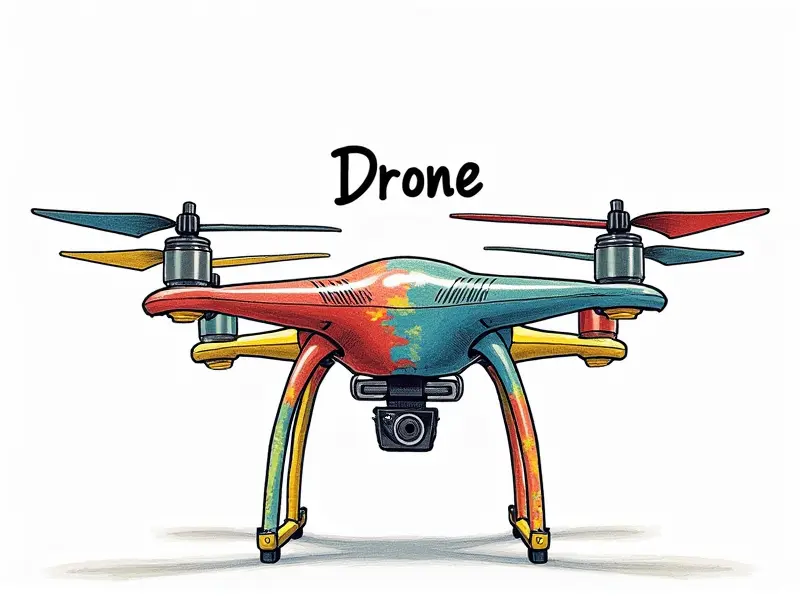Are RC quadcopters safe to fly?

Are RC Quadcopters Safe for Beginners?
For beginners, the safety of flying remote control (RC) quadcopters can be a significant concern. However, with proper training and adherence to guidelines, even novice pilots can enjoy safe flights. The key is understanding basic flight principles, such as lift generation and stability controls.
Understanding Basic Flight Principles
- Lift Generation: Quadcopters generate lift through the rotation of their propellers. Each rotor produces a force perpendicular to its plane of rotation, which when combined, creates upward thrust.
- Stability Controls: To maintain stability, quadcopters use electronic stabilization systems that adjust motor speeds in real-time to counteract any disturbances and keep the drone level.
Safety Tips for Novices
- Start with a simulator or indoor training area before venturing outdoors.
- Select a beginner-friendly model equipped with safety features like automatic return-to-home (RTH).
- Always read the manufacturer’s manual and follow recommended guidelines for assembly, calibration, and maintenance.
Legal Considerations for RC Quadcopter Use
Flying an RC quadcopter comes with legal responsibilities. Regulations vary by country and region but generally include restrictions on flight altitude, distance from populated areas, and no-fly zones around airports and government facilities.
Understanding Local Laws and Regulations
- Airspace Restrictions: Check local aviation authorities for airspace rules. For instance, in the United States, you must comply with Federal Aviation Administration (FAA) guidelines.
- No-Fly Zones: Avoid flying near airports and military installations to prevent interference with aircraft operations.
Registering Your Drone
- In many countries, including the United States, you must register your drone with the FAA if it weighs between 0.55 pounds (250 grams) and 55 pounds (25 kilograms).
- Registration involves providing basic information about yourself and your drone.
Common Mistakes in RC Quadcopter Safety
Missteps can lead to accidents or legal issues. Some common errors include flying without proper training, neglecting maintenance checks, and ignoring weather conditions that affect flight stability.
Flying Without Proper Training
- Attempting advanced maneuvers before mastering basic controls can result in loss of control and potential damage.
Neglecting Maintenance Checks
- Regularly inspect your quadcopter for loose parts, worn components, and battery condition to ensure optimal performance and safety.
Ignoring Weather Conditions
- Flying in high winds or poor visibility increases the risk of losing control. Always check weather forecasts before taking flight.
Understanding RC Quadcopter Flight Risks
Risks associated with flying quadcopters include collision hazards, battery failures, and electronic malfunctions. Awareness of these risks is crucial for mitigating potential dangers.
Collision Hazards
- Obstacle Avoidance: Use FPV (First Person View) technology to enhance visibility and reduce the likelihood of crashes into buildings, trees, or other obstacles.
Battery Failures
- Proper Charging: Charge batteries according to manufacturer instructions to prevent overheating and potential fire hazards.
Electronic Malfunctions
- Software Updates: Keep firmware up-to-date to benefit from the latest safety features and bug fixes.
How to Avoid RC Quadcopter Accidents
To minimize accidents, follow best practices such as conducting pre-flight checks, using flight logs to track performance issues, and adhering strictly to manufacturer guidelines for operation and maintenance.
Conduct Pre-Flight Checks
- Inspect all components before each flight to ensure everything is in working order.
Maintain Flight Logs
- Document flights, noting any anomalies or issues for future reference and troubleshooting.
Protecting Privacy with Safe RC Drone Flights
Flying drones near private property raises privacy concerns. Respect people’s right to privacy by avoiding unauthorized surveillance and adhering to local laws regarding data protection and privacy rights.
Avoid Unauthorized Surveillance
- Do not fly over or capture images of private residences, gardens, or other personal spaces without explicit consent.
Is It Safe to Fly RC Quadcopters Indoors?
Flying quadcopters indoors presents unique challenges due to reduced visibility and confined space. However, with proper precautions like using FPV goggles and flying in large open areas, indoor flights can be safe.
Using FPV Goggles
- Enhanced Visibility: FPV goggles provide a live video feed from the drone’s camera, allowing pilots to see obstacles clearly even when out of line-of-sight.
Ensuring Safety When Flying FPV Drones
Flying in first-person view (FPV) mode requires additional safety measures such as buddy box systems and visual observers to monitor the drone’s position relative to its surroundings.
Buddy Box Systems
- Secondary Control: A buddy box system allows a second person to take control of the drone if the primary pilot loses orientation or encounters issues.
Visual Observers
- Monitoring Position: Visual observers help track the drone’s movement and alert the pilot to any potential hazards.
RC Quadcopter Safety Gear and Equipment
Investing in safety gear like propeller guards, crash pads, and GPS modules can significantly enhance flight security. These accessories protect both your equipment and surroundings from damage during accidents.
Propeller Guards
- Impact Protection: Propeller guards shield the rotors from impacts with objects or surfaces, reducing the risk of propeller breakage and injury.
Crash Pads
- Soft Landing Surfaces: Crash pads provide a cushioned landing area to minimize damage upon impact in case of an unexpected crash.
Is Flying RC Quadcopters Dangerous?
Flying RC quadcopters can be dangerous if proper precautions are not taken. However, with the right knowledge and equipment, the risks can be managed effectively to ensure safe and enjoyable flights.
Risk Management
- Implementing a comprehensive risk management plan that includes regular training, safety checks, and adherence to best practices significantly reduces potential hazards.

